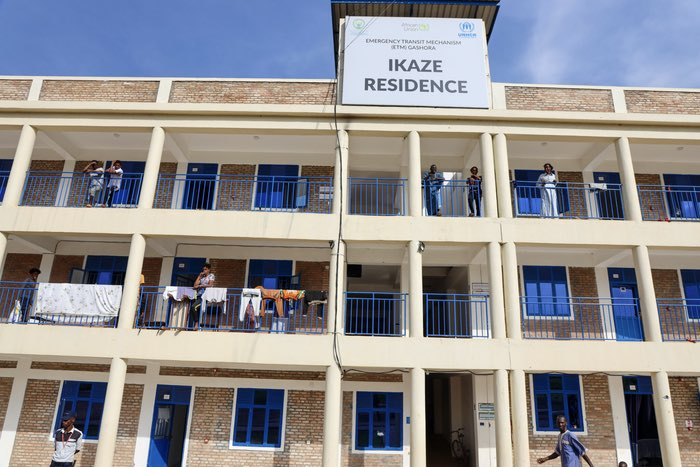
By Eric Didier Karinganire
When fighting suddenly erupted in Ragina’s home village in July 2017, the South Sudanese woman had no choice but to seek safety for herself and her two daughters.
Their arduous and tiring journey, marked by thirst and hunger, took them to Sudan, Egypt, and Libya, only to find one of her daughters kidnapped before they were rescued and evacuated to Rwanda in March 2023.
“After we arrived in Libya, they tried to kidnap me and my daughters three times. Two times we escaped, but the third time they kidnapped my daughter Eman for one month and I could not know the whereabouts of her,” recalls the 36-year-old woman.
At that time, she reached out to UNHCR in Libya, the UN Refugee Agency, asking for help to search for her kidnapped daughter.
“I was between life and death. I couldn’t comprehend the situation,” she says.
A month later, she received a phone call from UNHCR staff telling her to report to their office.
“When I reached there, I was surprised when I found Eman (her daughter) sitting. At that time, I thanked God,” she recounts. “After that I kept following up with them through the telephone because the situation in Libya was not safe.”
Due to harassment, Ragina explains, she and her daughters were moving from one place to another until UNHCR processed their case for the evacuation to Rwanda.
During the evacuation interview, she was informed that they would be taken either to Rwanda or Niger where UNHCR operates Emergency Transit Mechanisms, to which she consented. A month later, the decision was made, and she was informed that she would be temporarily evacuated to Rwanda.
“While I am living here, in Rwanda, I don’t feel like I am living in a foreign country, ” she says. “And before I came here to Rwanda, I had not imagined that there would be buildings like these. When they said camps, I thought they were camps made up of tarpaulins like those I used to see sometimes on the TV.”
Ragina and her two daughters were accommodated at the Emergency Transit Mechanism (ETM) centre located in Gashora – nearly 60 km south of Kigali – before they were resettled to Canada in March 2024. The ETM was established in 2019 by the Rwandan government, the African Union and UNHCR, supported by donors such as the European Union (EU).
Since then, it has provided a life-saving channel to evacuate refugees and asylum seekers in need of international protection from Libya to Rwanda as durable solutions – such as resettlement to third countries – are sought.
Since the inception of the Emergency Transit centre, 2,242 people have been evacuated from Libya to the centre. As of mid-May 2024, 1,646 of these people have already departed through resettlement to third countries including Norway, Sweden, Canada, France, Belgium, the Netherlands, Finland, and the USA.
While these individuals temporarily remain in Rwanda, the ETM provides shelter as well as access to health, psychosocial support, and livelihood training for the evacuees during the processing of their refugee status and identification of future solutions. On average, refugees and asylum seekers stay at the ETM for eight months at a time.
Rajina participated in some of the activities such as the English language class, and computer training, and handcrafting during her time at the ETM.
“Here are many activities in which one can invest their time so that a person does not feel bored or fed up,” she says.
Ragina believes that the language and computer classes will help her in daily life now that she has been resettled to Canada.
But seeing her children thrive and secure a brighter future is where her greatest hope lies.
“I hope to raise my daughters in a healthy upbringing and to provide them with better education so that each of them can learn the field they want and work in their field of specialties,” Ragina concludes. [Source : UNHCR Rwanda]. (End)
